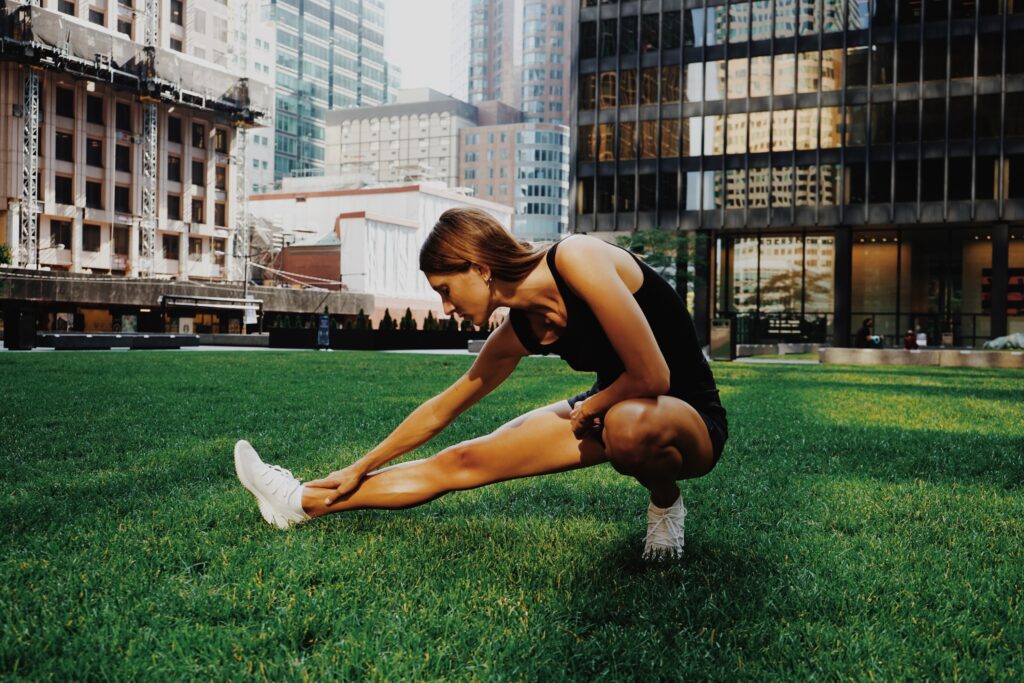Running is a great activity to keep fit, stay active and improve your mood. It is very accessible – all you need is a pair of runners and you’re good to go. It’s no wonder it’s the most participated in sporting activity in the world.
As we age, running can become more difficult. Our bodies aren’t as forgiving and don’t recover as quickly, but don’t let this scare you away from running! Following structured programs and routines is great for all runners, but it becomes more important as we get older. Listed below are a few running tips to help you run better, easier, and reduce the risk of injury.
Warm-up
Doing a proper warm-up is vital to prepare our bodies and mind for the running session ahead. There is plenty of evidence that shows dynamic warm-ups aid in the following ways:
- Increases core and muscle temperature
- Increases blood flow
- Improves oxygen delivery
- Improves range of motion
- Stimulates the nervous system (e.g. activate the glutes)
- May reduce the risk of injury
Examples of a dynamic warm-up are walking, slow jog, leg swings, high knees, butt kicks etc.

Goal Setting
Setting “SMART” goals for the short and long term can help to motivate you and give you a reason to continue. Knowing that each run is getting you closer to those goals makes the run much more enjoyable.
Nutrition, Hydration & Sleep
These are often forgotten about, in particular, the amount of sleep. Sleeping helps to accelerate tissue repair and boost human growth hormone, which helps to build muscle. Nutrition fuels our body – it doesn’t matter how big the engine is; it will not move without fuel.

Structured Program
Having a structured, well-written program is essential to running. Generally, to improve your running, you want to be doing at least 2-3 sessions per week. Some people run every day, though I usually advise against this and recommend including a rest day for recovery.
It is important to be doing different types of running and distances. Interval training can help increase your speed; however, don’t underestimate the benefits of slow, easy runs. This is something I never listened to in my younger days. Easy runs can help to increase aerobic capacity and aid in faster recovery. If you can throw some weight training in there, it may help improve your VO2 max.
Progressive Overload
Don’t increase your running load too quickly. This is the most common reason for the injury, particularly for those who have just taken up running. Load is made up of frequency, intensity and duration. There are many guidelines on how to progress safely; the 10% rule is often used, whereby you increase your load by 10% each week. An example would be if you run 10kms in total in the first week, you would increase to 11km in the second week.

Running Gait Analysis To Improve Your Technique
Is your running technique holding you back? Is it efficient? There may be better ways to run. Running with poor technique may lead to increased injuries and affect your performance. It can be beneficial to practice proper technique, especially early in a runner’s journey, to reduce the risk of bad habits. The running gait analysis at Stay Tuned Sports Medicine looks at the biomechanics of the whole body; joint angles, movement patterns, strength testing, cadence, foot strikes and placements, and footwear are just a few of the things analysed. This then creates a program to improve and correct the technique.
Lastly, relax and stay calm
Enjoy your run. Relax your upper body and control your breathing. Looking at your surroundings or listening to music/podcasts can be a great way to forget about the effort you’re putting in. Studies have shown that listening to music may improve performance.
Everyone will have different reasons to run and different things that work for them. The quotes “I’m not a runner”, “running is too hard”, “every time I run, I get injured” are excuses people use to avoid running. These tips may help you to destroy those excuses or to reach new heights.
Author: Dr. Josh Osborne (Sports Podiatrist)

If you liked this article, you might also like Josh’s instructional youtube video: What Causes Running Injuries
We hope these suggestions are helpful to you. Stay tuned for more run well tips from the team via our Instagram @staytunedsportsmedicine.

